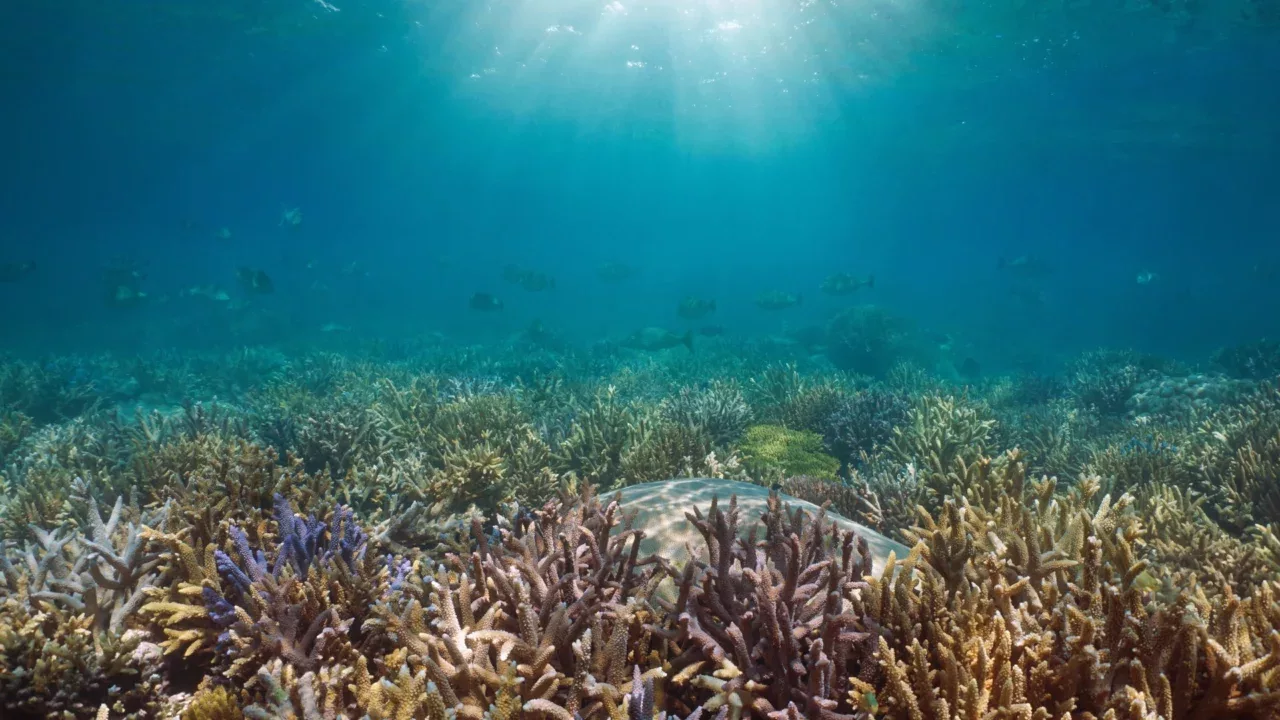A new report by the Australian Institute of Marine Science’s Long-Term Monitoring Program (LTMP), published 6 August 2025, presents the latest findings on coral cover across the Great Barrier Reef (GBR), following the 2024 mass coral bleaching event – Australia’s fifth in just eight years and part of the Fourth Global Bleaching Event declared in April 2024.
The 2024 bleaching event had the largest spatial footprint of any bleaching event recorded on the GBR, with widespread high to extreme bleaching observed across the Northern, Central, and Southern regions. Data collected between August 2024 and May 2025 from 124 reefs reveal significant declines in coral cover, particularly on reefs most affected by high bleaching severity. Regional coral cover losses ranged from 14% to 30%, with some individual reefs experiencing losses up to 70.8%. Fast-growing Acropora spp., key to recent recovery trends, were amongst the most heavily impacted.
In total, 48% of surveyed reefs showed declines in coral cover, 42% showed no net change, and only 10% exhibited increases, mainly in the Central GBR.
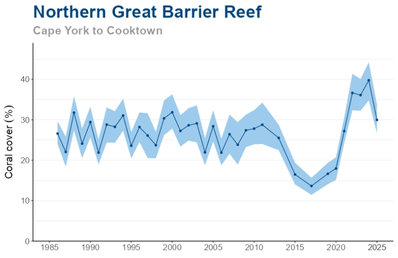
In 2025, average hard coral cover on the Northern Great Barrier Reef declined by 24.8%, dropping from 39.8% in 2024 to 30.0% – the largest annual decline ever recorded for the region. Despite this, coral cover remains above the long-term average of 26.6%.
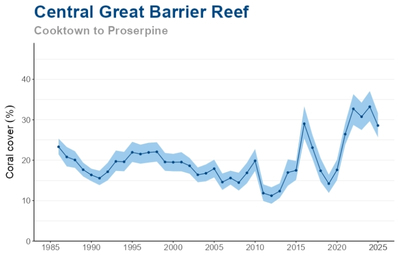
In 2025, average hard coral cover on the Central Great Barrier Reef declined by 13.9%, dropping from 33.2% in 2024 to 28.6%. Despite the decrease, cover remains well above the long-term average of 19.8%.
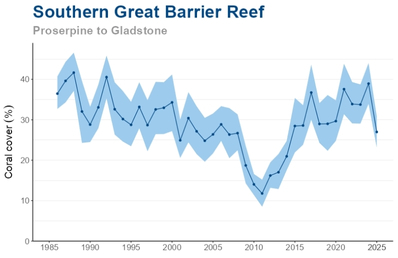
In 2025, average hard coral cover on the Southern Great Barrier Reef dropped by 30.6%, falling from 38.9% in 2024 to 26.9%. This marks the largest annual decline recorded for the region and brings coral cover below the long-term average of 29.3%.
In addition to bleaching, other stressors such as cyclones, freshwater inundation, and crown-of-thorns starfish (COTS) further compounded coral mortality. COTS were detected on 27 reefs, with several confirmed outbreaks in the Northern and Southern GBR.
The summer of 2025 brought further thermal stress, resulting in a sixth mass bleaching event. While its full impact will be assessed in next year’s surveys, initial aerial surveys indicate medium to high bleaching on 41% of inshore and mid-shelf reefs in the north and central GBR.
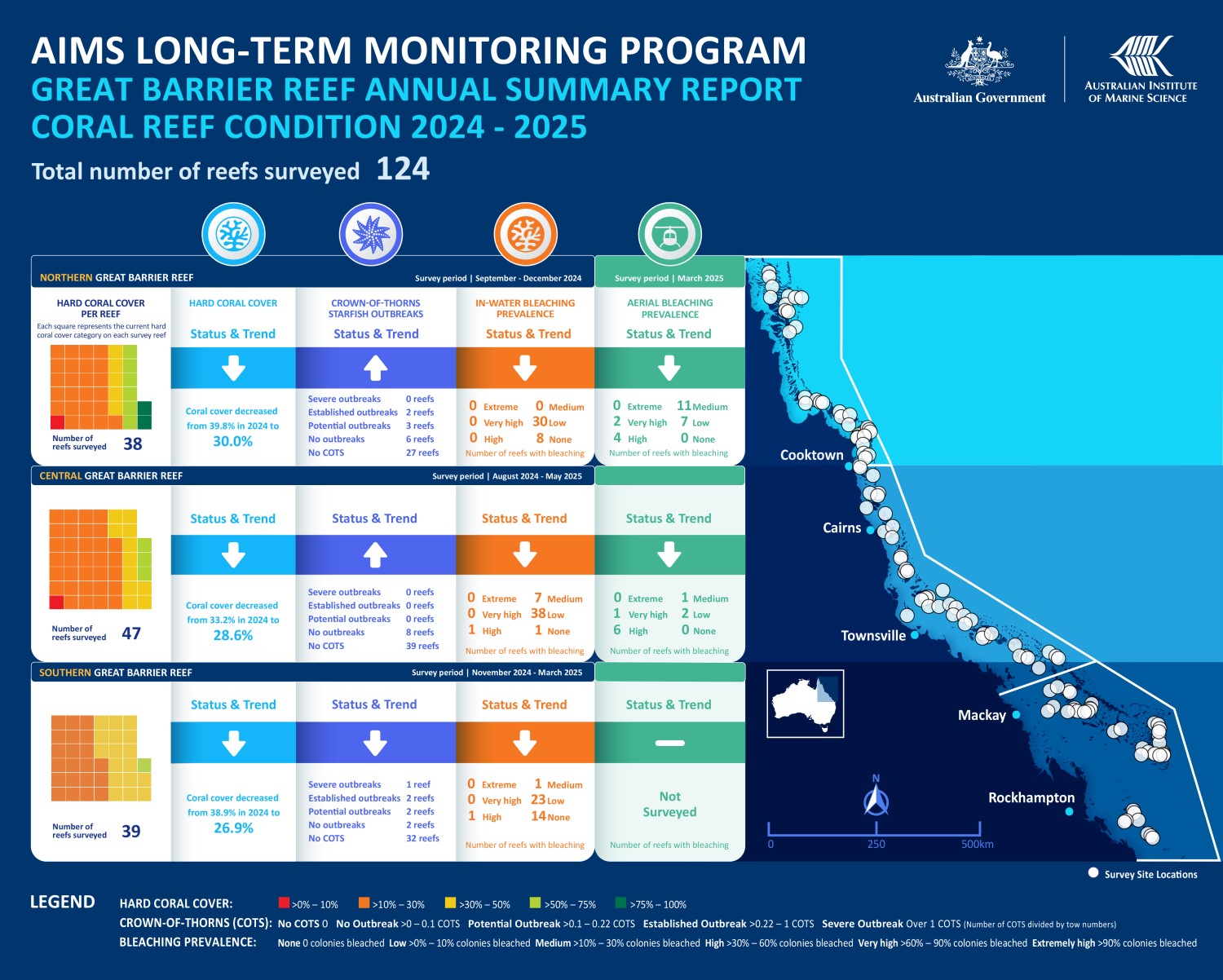
Despite these pressures, the GBR continues to retain more coral cover than many reef systems globally. However, the increasing frequency and severity of bleaching events, combined with shorter recovery periods, pose serious challenges to the long-term resilience of coral reefs in the region and beyond.
As 2025 marks a pivotal midpoint in achieving global biodiversity and sustainable development goals, these latest from the GBR underscore the urgent need to prioritise coral reef resilience. ICRI’s Key Policy Asks for Coral Reefs set out asks for action, calling for the reduction of reef stressors, the scaling of effective management, and equitable and inclusive governance. Securing the future of coral reefs requires science-based decision-making, support by monitoring networks, such as the GCRMN, cross-sectoral collaboration, and a shared commitment to safeguard these ecosystems for generations to come.
Source: Long-Term Monitoring Program Annual Summary Report of Coral Reef Condition 2024/2025, Australian Institute of Marine Science (AIMS)
Report Citation: AIMS LTMP (2025) – https://doi.org/10.25845/CS9T-0K11

